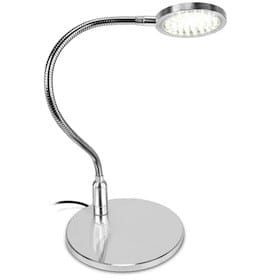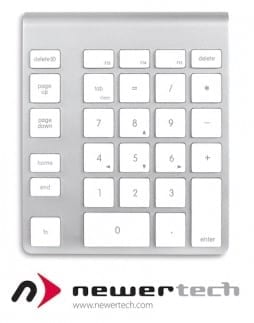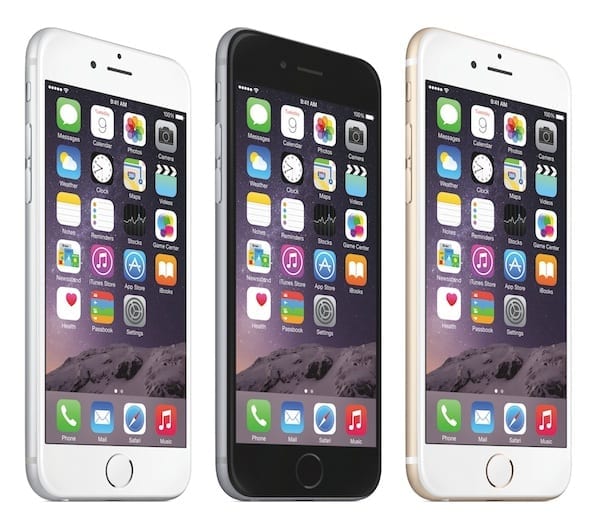This is the first part of a continuing series that I’ll be writing for the Rocket Yard about automating your home with iOS. Over the past year, we’ve seen Apple take a more active part in terms of home automation with the release of HomeKit, a framework that developers of iOS apps can use to facilitate integration with home automation devices. In this series, I’ll talk about the current state of the home automation market, what can be easily automated, how readers can phase in automation to make the cost more manageable, and how HomeKit may revolutionize home automation. Today, I’ll talk about the first two pieces of the puzzle – what can be automated and what’s currently available.
 What Can Be Automated?
What Can Be Automated?
Let’s face it, just about any electrically operated piece of equipment in a home can be turned on and off remotely using today’s home automation apps and devices. But let’s get into a bit more detail about what that means. Here are some examples of things you can do, and some of the equipment and apps you’ll need.
Lighting
This was the first area that received attention from manufacturers, and the name everyone remembers is Philips. The multinational corporation released the colorful Philips Hue lightbulb, with color and intensity of the bulb controlled by an iOS app. Since that time, many more controllable “smart bulbs” that dim or turn on and off with the assistance of an app have been released by a variety of companies. All of these bulbs require a home automation hub of some sort. The bulbs can be purchased in a starter kit with a hub, there are third-party hubs available, and you can even purchase a Wi-Fi router with a built-in hub.
Switches
What if you wish to use existing lamps or lightbulbs, but want to control those lights from your iPhone or iPad? Easy – there are a number of manufacturers that make and sell switches to turn those lights on and off, or even dim them. Most just plug into existing wall sockets and have one or two more sockets that can be controlled. The most useful switches don’t require any special hub, so you can just plug ’em into the wall, then use your iPhone to name, configure, and control the switches.

Not only are there plug-in switches, but also switches that can be used to replace current wall switches and controllable outlets. Both of these require some skill to install as you’ll be working with electricity – if you’re not thrilled about the possibility of getting an electrical shock, ask a professional electrician to install these or just stick with the plug-in switches.
Sensors
Part of the fun of home automation these days is having your house become aware of you and conditions around it. As such, most of the equipment manufacturers also have a variety of sensors that you can install. What’s out there? Well, there are what I call “home weather” sensors that track the temperature, humidity, CO2 levels, sound levels, and other environmental factors in your home.
Of course, some of the smart thermostats now on the market can tell you what the temperature is like in your home… and also control your heating and cooling systems automatically for the most energy efficient operation, or do somewhat magical things like turn the air conditioning or heat on when you’re a certain distance away from home. You can also control your home’s environment from anywhere on the planet (or off it) with an internet connection through apps that work with your thermostat.
There are sensors to tell you whether a water pipe has broken or your basement is flooding. There are carbon monoxide (CO) detectors. There are even detectors to determine when one of your other alarms (burglar, smoke, CO) is going off so that it can send a notification to your iPhone. But what about the doors and windows at your home? That’s where the security part of home automation comes in.
Security
There are plenty of webcams that you can buy to either keep an eye on your home or pets while you’re away, or actually sense motion or loud noises and sent you (or trusted authorities) a notification that something odd is going on.
For the doors and windows, a variety of companies sell door and window sensors that you simply stick onto the door or window frame – they’re battery-powered, and immediately send an alert if a window or door is opened. Perhaps you want to make sure that a door is locked? Then get a door lock that provides a way for you to open or close it remotely. There are electronic locks that replace a deadbolt lock and can be controlled remotely from your iPhone. Other locks can’t be remotely-controlled as they use Bluetooth to communicate with your iPhone but give you the option of emailing an electronic “key” to others who may need access to your home.
There are also garage door openers and sensors that can tell you whether the garage door is still open, then automatically close the door under certain conditions. Last year, I used a Wi-Fi enabled relay switch to retrofit a 20-year-old garage door opener so that it can be opened or closed with my iPhone.
And more
There are now appliances and controllers that work with your iPhone. You know that old crock-pot slow cooker that you want to replace anyway? There’s a Wi-Fi version of it that lets you change the temperature or timing of what’s cooking from anywhere. Do you hate trying to set the timer on your coffeemaker? There’s a Wi-Fi enabled coffeemaker that lets you not only set the timer from your iPhone, but also lets you know when you need to change the water filter or actually add water to the tank. Other appliances include room air conditioners, heaters and humidifiers
My favorite home automation device of 2014 was a smart internet-connected sprinkler controller. Not only did it save me money last year by checking local weather conditions before adjusting the sprinkling times, but the intelligent timing algorithms also ended up giving me the best-looking lawn I’ve had in years.
Standards, standards, standards…
The big thing to think about before you start buying all of the bits and pieces for a home automation system is how they will work together. Fortunately, there are some standards that exist and that make it easier to determine which items will easily work with one hub or another. Zigbee is one standard that’s used to create mesh networks of compatible devices, Z-Wave is another, and Insteon is yet another. Many of the automation hubs on the market also support both Zigbee and Z-Wave, as well as other standards.
There are also methods of linking differing systems through software. Probably the most common is If This Then That (IFTTT.com), which lets users create their own “recipes” with certain triggers and actions. A lot of the home automation companies support IFTTT, so it’s easy to do something like create a recipe to turn off all lights – even those controlled by different standards – in your home with one command.
In the next edition of this series, I’ll talk about how to create a home automation plan. Configuring and buying home automation hardware can be quite expensive, but there are ways of achieving the maximum bang for your buck and implementing a phased plan over a few years to save money.










iOS will soon take cover INSTEON technology and raspberry pi. Apple Technology is the biggest brand in home automation industry taking over Samsung.
Regards,
Javed Khan
After looking up “Smart Home” in Wikipedia I’m still unclear as to what can and what cannot be incorporated into a smart home system. I assume an item needs to be directly or indirectly accessible to a hub wired or wi-fi. So I have 2 questions that directly pertain to the Blossom (myblossom.com/technology/)
1) Can a smart home system utilize Powerline technology?
2) If an item has it’s own app, do you then reprogram it, or use another program altogether?
XTension is the best choice for this. http://www.shed.com Set up a machine that’s always watching the house and then control it away from the web. One of NASA’s Shuttle project co outer gurus invented it and it’s always been the best.
Or just get Indigo and use your Mac, with iOS as a remote. This is what I did, and it’s perfect.
I was a relatively early adopter of X-10 stuff (and still have a box of X-10 controllers, if anyone wants them…) The big problem was signal reliability over power lines, and the few Insteon devices I have didn’t seem to be much better than X-10. Hopefully the next installment will discuss configuration and security issues, as well as listing sources.